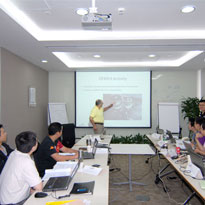TETRA Overview
- Course:TETRA Overview
- Course ID:TETRA1 Duration:3 days Where: Your Office (7+ Persons)
- Download Course Description (PDF)
Available as a private, customized course for your group at your offices or ours and in some cases as a WebLive(TM) class.
Course Outline
- TETRA Overview: Introduction
- What Is TETRA?
- Trunked Mobile Communications: Concepts and Benefits
- ETSI and the TETRA Standards: Identifying the key Specification Documents
- TETRA features
- Bearer Services, Teleservices, Supplementary Services
- Voice and Data Services
- DMO: Direct Mode Operation
- TMO: Trunked Mode Operation
- SDS: Short Data Service and How It Differs from SMS
- Security
- TETRA Applications
- TETRA Equipment, Addressing and Numbering
- Radio Terminals: Handheld and Vehicle-mounted
- Terminal Capabilities
- TETRA Numbering and Addressing
- Identifiers and How They Are Used: TEI, MNI, ITSI, ISSI, GTSI, ATSI
- Terminal MMI: How the Menu System and MMI Are Used to Select Features/Functions
- TETRA Base Stations: Typical Capabilities
- TETRA Switching and Management Infrastructure: Typical Capabilities
- TETRA Architecture, Interfaces, and Call Handling Procedures
- Distribution of TETRA Network Functionality
- Functionality of BS, LSC, MSC, LS, MT, TE
- TETRA Standardized Interfaces
- Trunked Mode Air Interface
- Inter-System Interface
- Peripheral Equipment Interface
- Line Station Interface
- Network Management Interface
- Direct Mode Air Interface
- Gateway Equipment
- TETRA Call Handling Procedures (how calls make use of the TETRA Infrastructure)
- MS Operational Modes
- Mobility Management
- Attachment to Network
- Cell Selection and Reselection
- Group Call Handling
- Individual Call Handling
- Cell Selection/Reselection in Traffic Mode
- Security, Authentication, and Encryption
- Circuit Mode Data Operation
- Packet Mode Data Operation
- Direct Mode Call Handling
- Repeater and Gateway Operation
- TETRA Air Interface
- Frequency Spectrum Allocations and Channel Assignments
- Structure of the Physical and Logical Channels
- How FDMA and TDMA Are Used
- Functions of Physical Layer
- Functions of the Medium Access Control (MAC) Layer
- Functions of the Logical Link Control (LLC) Layer
- TDMA Frame, and Multi-frame Structure
- TETRA Physical Layer
- Frequency Allocation
- Carrier Frequencies and Radio Channel Numbers
- TETRA Modulation Scheme (π/4DQPSK)
- Frame, Slot, and Burst Structures
- Radio Resource Functions
- Synchronization
- Frequency Reference
- Transmission Delays
- Scrambling
- Power Control
- TETRA Data Link Layer
- LLC and MAC Sublayers
- Coding and Interleaving (how and why it is used)
- FEC and Error Correction (how and why it is used)
- Channel Coding for Data and Signaling
- Stealing (how and why it is used)
- The Random Access Procedure
- Mapping of Logical Interfaces onto Physical Layer
- System Modes: Normal, Extended, Minimum, Discontinuous
- Mobile Station Modes: Idle, Signaling and Packet Data, Traffic, Economy
- TETRA Network Layer
- Network Layer Concepts
- TETRA Network Layer and Protocol Stacks
- Mobile to Base Link
- Mobility Management Protocols
- Circuit Mode Operation
- Packet Mode Operation
- TETRA Data Services
- Course Wrap Up: Course Recap, Final Q & A Session, and Evaluations
Course in a Nutshell
This course will equip you with the understanding of TETRA principles, functionality, and procedures that you need to be able to operate, maintain, and troubleshoot your TETRA network. Unlike courses that are presented in the “death by PowerPoint” format, we will employ lecture interspersed with interactive diagrams, discussion of participant questions related to their implementation, example calls made with the clients handsets on your network, and discussion of your TETRA configuration and settings.
Customize It!
Let us know your network architecture and what you are trying to achieve from this course and we’ll tailor our course to your specific requirements. The topics can be added/excluded and the course duration shortened/lengthened as needed.
Aimed At
RF personnel with limited exposure to digital RF modulation and TETRA.
Prerequisites
Some prior exposure to RF, wireless, telecom, or IT will be helpful.
- "Truly top notch! Very experienced, outstanding instructor. Liked the extensive knowledge of the instructor and the manner of presentation, also the overall quality of the material and the illustrations which supported the information presented. Very articulate and professional, and very patient with explaining the course material." – Technical Services Provider
- "Wide range of topics related to TETRA covered. Excellent instructor, great subject matter expertise. Course book, with slides and notes, is great reference. Good info, great instructor; thank you for a professional course!" – Technology Consulting Company
- "Liked coverage of how TETRA works, architecture, security. Instructor very knowledgeable, willing to talk outside of lectures. Smart guy! Very detailed notes, well organized, one of the best I have seen, very useful! Class very well run, nice facility, great instructor." – Provider of Services to US Government

